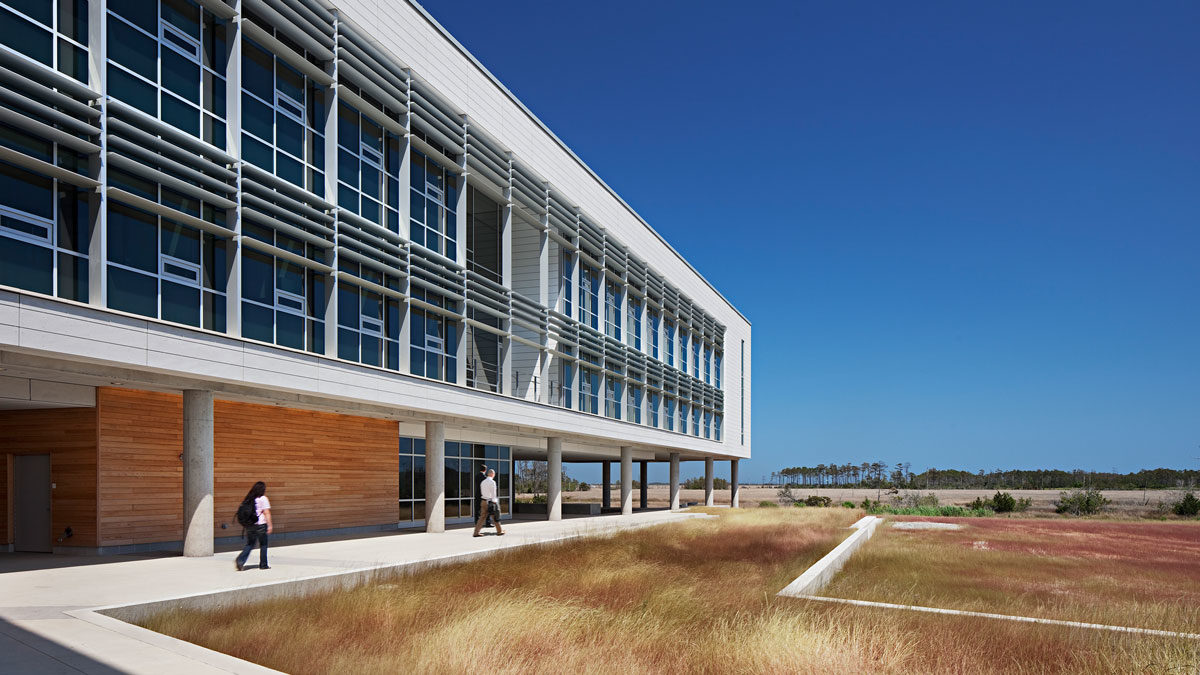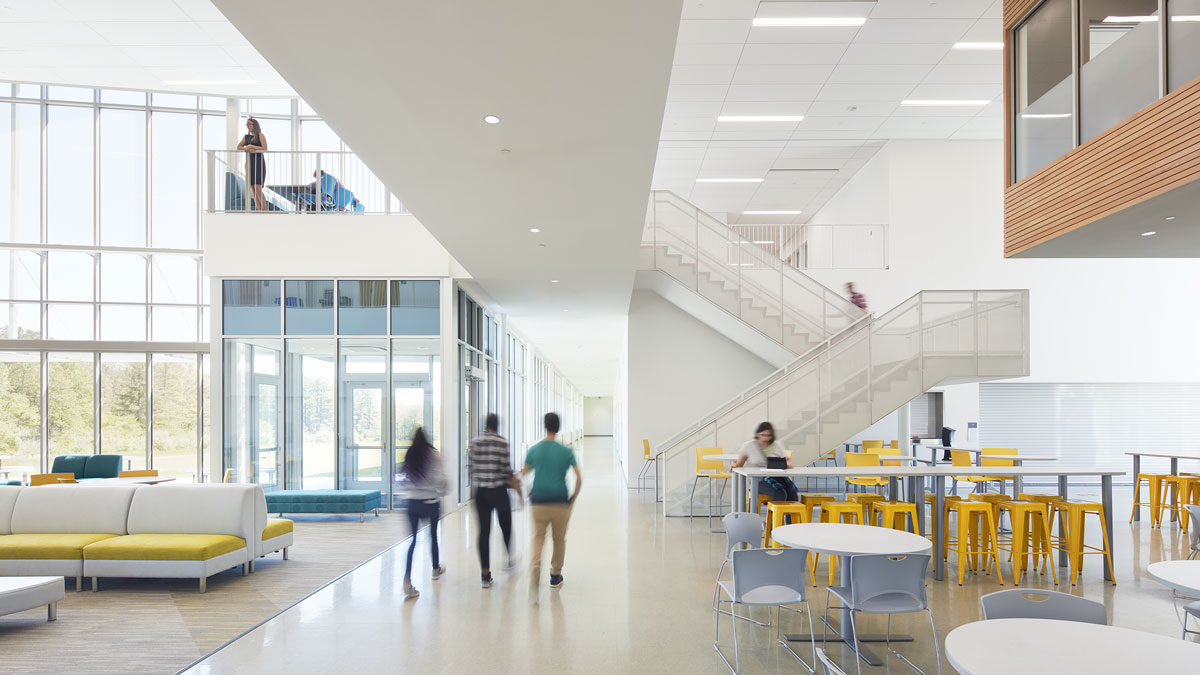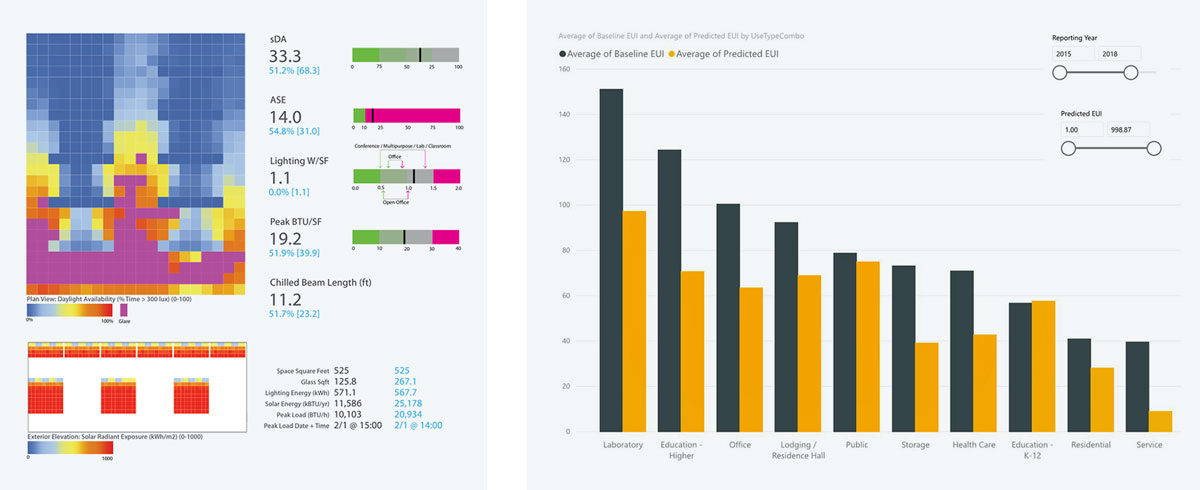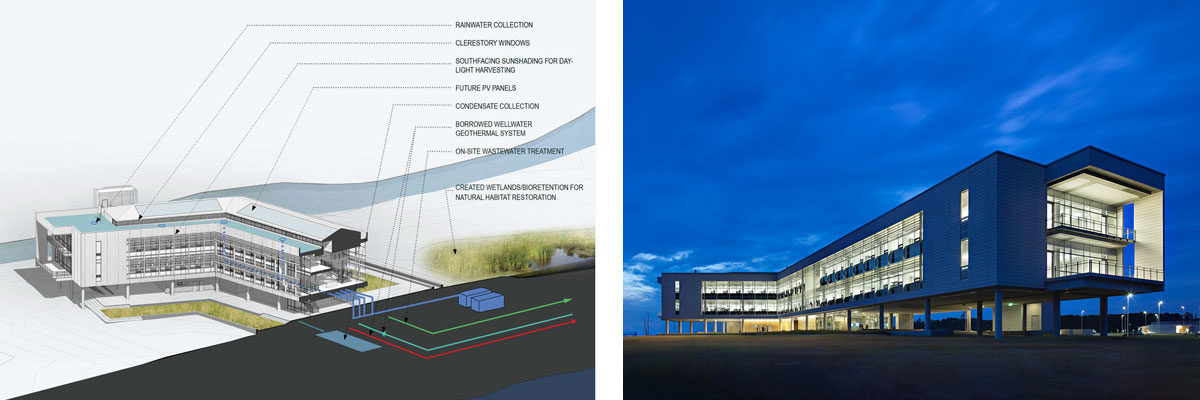Defining A Design Process that Maximizes Sustainability and Building Performance
 As extreme climatic events become more frequent around the world, designers of the built environment have a crucial role in mitigating climate change by working with nature to develop projects that are both resilient to these extremes and promote long-term sustainability.
As extreme climatic events become more frequent around the world, designers of the built environment have a crucial role in mitigating climate change by working with nature to develop projects that are both resilient to these extremes and promote long-term sustainability.
w
Clark Nexsen’s Don Kranbuehl makes the case that Integrated Design – an approach where diverse disciplines converge, research, and develop innovative solutions – can effectively, over time, solve the growing need for resilient design by reducing or eliminating the manmade contribution to climate change.
In action, Integrated Design demands advancing a collaborative, investigative, data-driven process that boldly addresses issues of environmental impact, resilience, preservation, and the corresponding human experience. The intersection of data, creativity, and collaboration delivers results for clients by reducing operating costs, results for the environment by minimizing the consumption of natural resources, and results for inhabitants by promoting healthier, happier conditions. To effectively leverage and facilitate these measures, it is more important than ever for firms to be tracking metrics related to goals and performance. This type of data is critical to executing and continuously improving sustainable design, in turn informing better design across our industry. Of equal importance is establishing the tools and infrastructure to make using that data and collaborating across disciplines an innate part of the design process.
Utilizing energy modeling early and often through the design process and creating a culture of tracking sustainability outcomes are both key components to elevating design practice and fully combating the built environment’s role in climate change. While designers and clients can achieve high levels of sustainability without participating in one of the many certification programs that exist (LEED, Green Globes, Living Building Challenge, WELL, Envision, just to name a few), these programs can serve a valuable purpose in reinforcing sustainable decisions.
The intersection of data, creativity, and collaboration delivers results for clients by reducing operating costs, results for the environment by minimizing the consumption of natural resources, and results for inhabitants by promoting healthier, happier conditions.
Similar to the function of third-party certification programs, design firms looking to achieve the highest possible levels of project performance must establish their own process software infrastructure and “roadmaps” to guide the sustainable design process. These tools enable designers and clients to realize high performing projects if they elect not to use a third-party certification and, more importantly, form the foundation for design teams to intuitively practice integrated design by becoming a seamless component in accounting and project management systems. Clark Nexsen’s process software infrastructure, for example, promotes accountability and transparency by allowing us to systematically track Energy Use Intensity (EUI), water savings, and other sustainability metrics. This capability is pivotal to our efforts to evaluate and continuously improve our designs based on clear, accessible building performance data.
Advancing an Integrated Design Practice
At Clark Nexsen, our vision to deliver high performing projects through Integrated Design is driving specific objectives and initiatives within our design practice. To challenge ourselves to continuously do better and to achieve key goals for making data and metrics central to the design process, the firm has created a set of resources and tools to facilitate our efforts. Our Building Science Group, process software infrastructure, and project roadmap work together to support our architects and engineers in delivering projects that reduce EUI, are optimized for their site, and benefit the client and users with a better experience.

Through collaboration and investigation in the design process, Henderson County’s recently completed Innovative High School features extensive natural light in student spaces and is tracking an EUI nearly 40% lower than the average baseline for its building type.
The Data Impact
Complex design solutions require a robust analysis. Newly introduced as an extremely valuable companywide resource for energy modeling, our Building Science Group is a critical asset for improving project performance and generating long-term operating cost savings for our clients. This group plays an integral role in informing design decisions and improving EUI outcomes by providing full-time access to energy modeling from concept design through construction documents. Additionally, the development of process software infrastructure takes the data provided by the Building Science Group and turns it into a valuable, readily-accessible resource for future reference.

For example, we are currently monitoring more than 50 projects over a cross section of building types as a part of our commitment to achieving energy performance of 70 percent better than the national average (by 2030). Across all monitored projects, pEUI reductions are significantly less than the baseline across all building types.
While we recognize that improving the sustainability of our design solutions and the impact of our own operations is an ongoing process of change and optimization, we believe our most recent achievements position us to make great strides in the years to come. By utilizing scientific, data-driven investigations of all built components, we strive to holistically design systems and select materials that maximize energy conservation and human health. Our goal is to integrate the unique qualities of any given site with the building and site infrastructure systems in order to maximize energy performance while protecting natural resources.

UNC’s Coastal Studies Institute exemplifies how energy performance, conservation, and client interests converge. With a unique geothermal heat pump system that utilizes an existing raw well water line as the source of renewable energy rather than drilling new wells, the system reduced construction costs by 50% and protected the surrounding aquifers and wetlands.
Building a Sustainable Future
As we look ahead, we prioritize not only our own ability to design high-performing, sustainable projects, but view it as our responsibility to support our peers in the A/E industry in this shared objective. By openly sharing ideas, focusing on our own operations, and advancing Integrated Design, I believe we can create an important and critically necessary shift to preserve our world for the future.
LEARN MORE ABOUT OUR APPROACH TO INTEGRATED DESIGN
Photographs by Mark Herboth

Don Kranbuehl, FAIA, LEED AP BD+C, is a principal with Clark Nexsen and an award-winning architect with experience in the design of academic, science and technology, and civic project types. For more information or to speak with Don about sustainable design, please call 919.828.1876 or email dkranbuehl@clarknexsen.com.